PISA GOLF PUTTER
for Your Successful Playing
Incredible performance with an angle used for the first time in history!!
(-)LOFT = (-)SCORE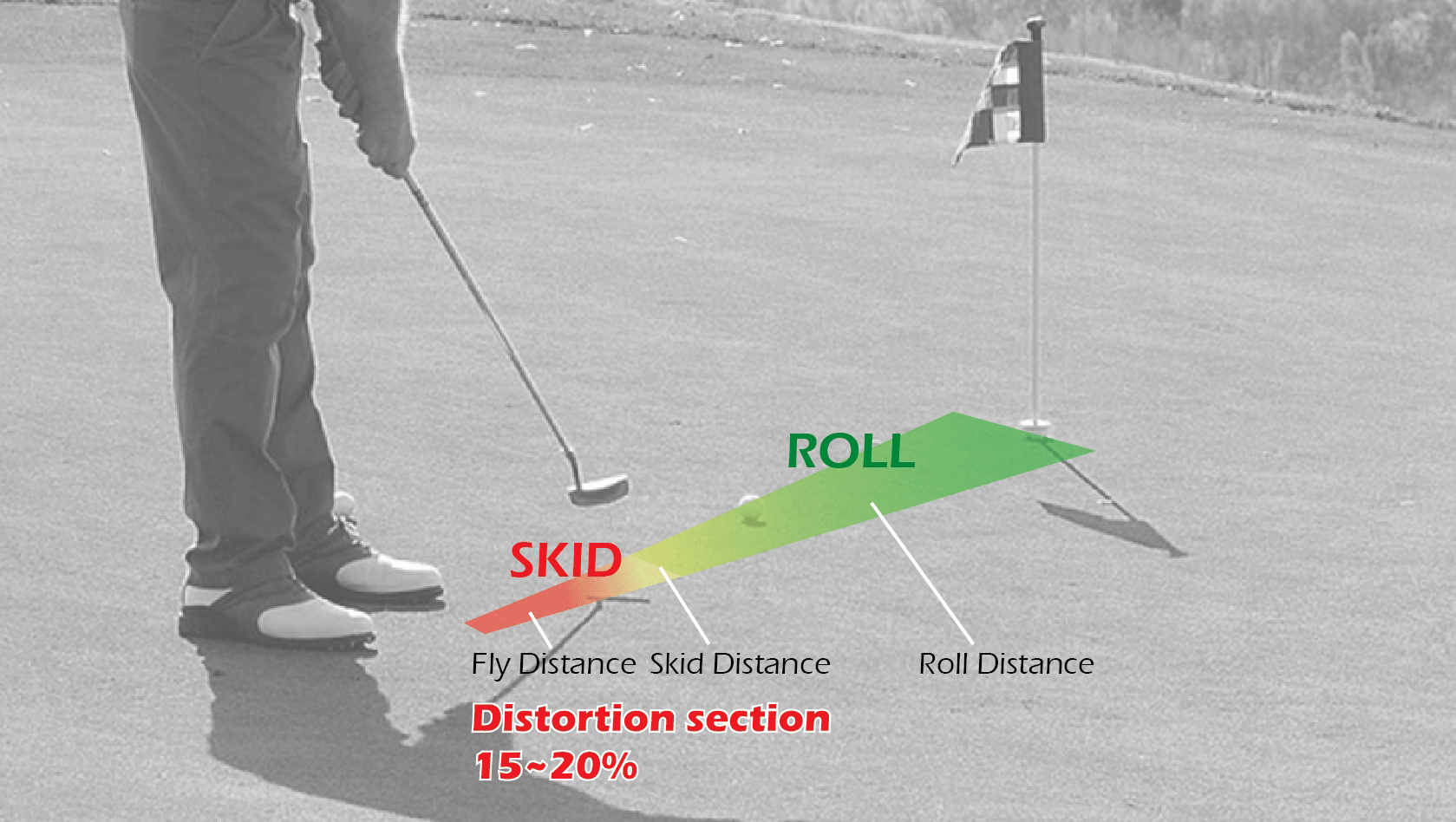
In putting, the ball doesn't roll immediately but creates unstable movement, as shown in the picture in the 15-18% of the initial section of the total distance traveled. This will create distortions in the 'direction and distance' of the ball. The hitting-type putting creates natural movement as the ball rolls on the ground. However, if you hit the ball, it creates distortion where it doesn't roll immediately and skids. In this case, you may find it difficult to produce consistent putting results, which will make it hard to putt.
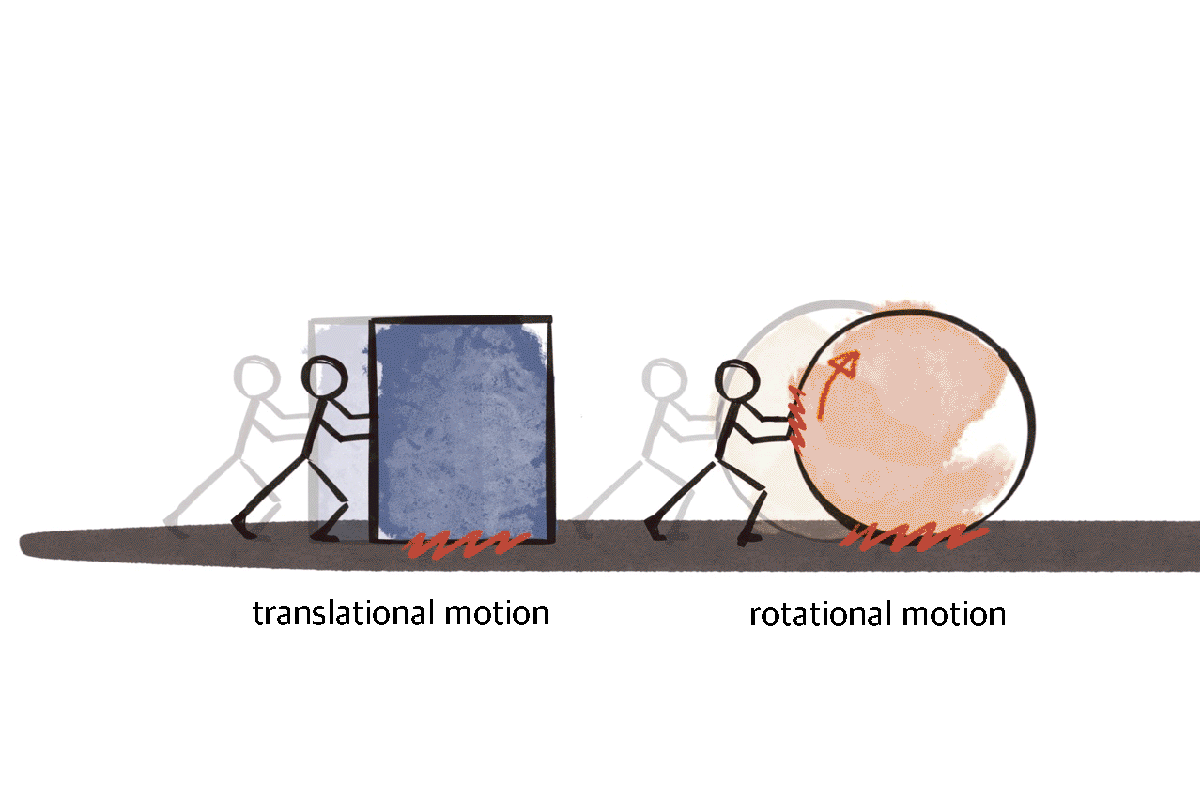
When an object moves, there's a translational motion like ice hockey's puck and a rotational motion like a sphere (ball). It's natural to see golf balls have 'rotational motion' when you make putts. Most putters at a positive loft have 'rotational motion' after going through 'translational motion.'
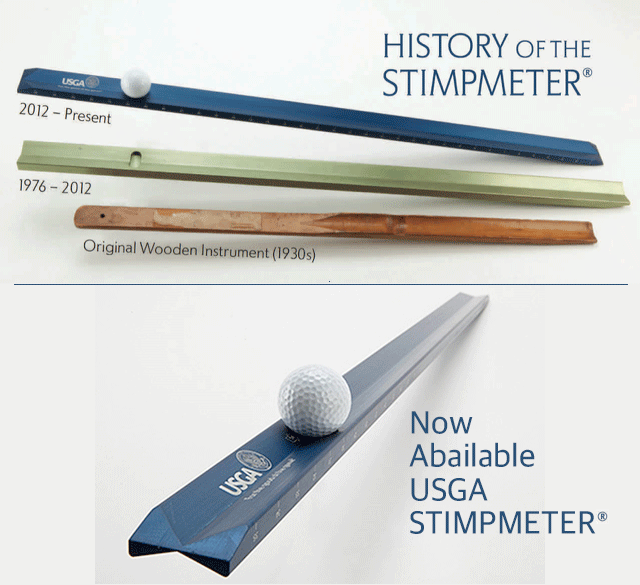
The USGA decided to use the stimpmeter with zero distortion as the standard green speed measuring device when they found it difficult to utilize the putter with its limitations in terms of consistency. To roll the ball accurately on the ground, it's better to apply a rolling-type method rather than a pushing or hitting-type method. That's why the stimpmeter (USGA's approved standard measuring device) measures the distance by rolling-type rather than hitting-type to obtain the standard value of its measurement. In other words, the existing hitting method makes it difficult to produce a consistent value due to distortion in the initial skidding section. In the end, the ideal putter creates a natural rotation of the ball immediately after hitting and minimizes distortion where the ball skids.
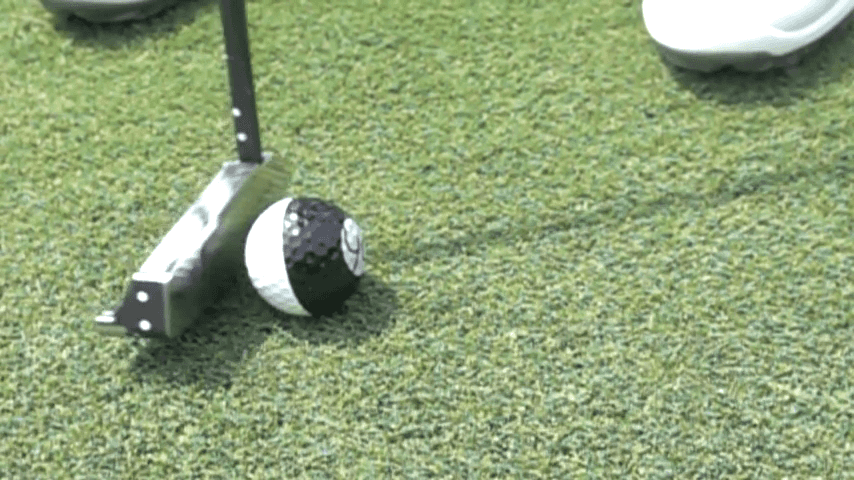
The best putters rotate immediately at impact. It helps the ball to generate a forward rotation directly along the ground by minimizing the initial skidding section.
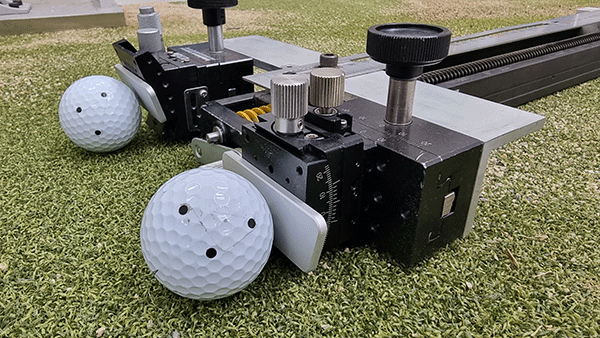
PISA focused on the putter's loft to generate a forward rotation immediately at impact. Through several tests, we concluded that a negative loft is an answer to its problem since the existing positive loft can't create a forward rotation at impact. In addition, we developed a technology to overcome or reversely use the rotational friction, which is considered the biggest disadvantage of the negative loft. The negative loft on the putter, low-friction materials, and a linear bearing module do not interrupt the ball's rotation. Furthermore, it is considered a technology that actively creates the spin corresponding to the amount of impact on the ball by increasing the impact surface. Such technology has proven its effectiveness, and we will gradually improve its performance.
PISA’s testing system
We completed tests with objective and reliable precision equipment
such as the world's best launch monitoring system, Quintic Ball Roll,
20,000fps high-speed camera, precision pendulum putting machine
variable loft striking device and others.
This video shows QUINTIC's ball roll test
The world's best launch monitor company.The videos below show the differences
between PISA's and NIKE's putters.We make efforts to obtain reliable data by specially creating the variable loft striker and the precision pendulum putting device. In particular, the loft can be adjusted by 1° in the range of -20 to 20°. We produced a module that can be preciously transported to the left and right and enable precise hitting by different levels of strength.
By hitting the putters with different lofts simultaneously, we could generate experimental data without errors.
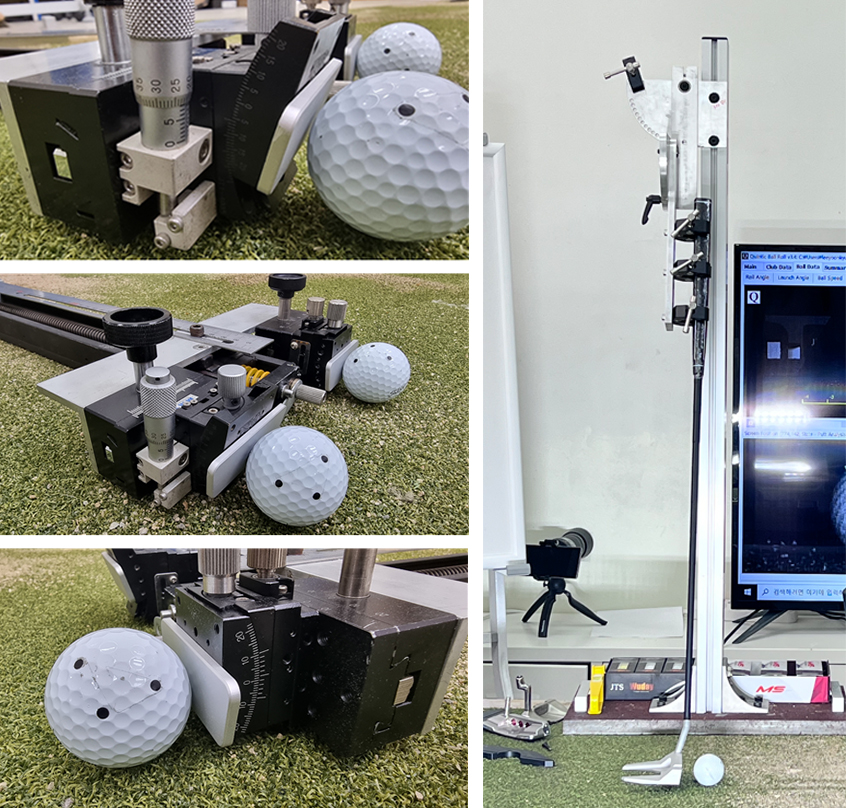 |
1. Test to check changes in the rotation of the ball by each loft from -20 to 20°
2. Test to check changes in the rotation of the ball by different levels of impact of the putter and ball
3. Test to check changes in the rotation of the ball by the friction of the ground and each loft
4. Test to check changes in the rotation of the ball according to the friction of the ground and putter face
Friction between
the ground
and the ball
rolling
Friction between
the surface of the impact
and the ball
rolling
Correlation between
the loft
and the ball
rolling
The results of our conclusion are as follows.
Negative loft of putter face
Maximize ground friction
Minimize friction on the putter
PISA putter is designed to "minimize friction of the impact point and maximize upper hit."
Negative loft is required to use the ground friction with an advantage of upper hit. To remove the rotational friction of the putter face, we used advanced low-friction materials. 180rpm initial rotation. (Hitting point: within 1 inch/ Existing putter: –5 ~ 0rpm)
With a uniquely designed micro-bearing unit, we reduced the putter face friction to almost zero, leading to 220rpm in the initial rotation. (hitting point: within 1 inch/ existing putter: –5 ~ 0rpm)
By applying a cam actuator, rack and pinion, and an oil cylinder to maximize rotation actively, we successfully accomplished 350rpm or above, a remarkable initial rotation performance. (Hitting point: within 1 inch/ existing putter: –5 ~ 0rpm)
PISA putter with enhanced RPM It reduces the distortion section where the ball skids and increases putting accuracy
 |
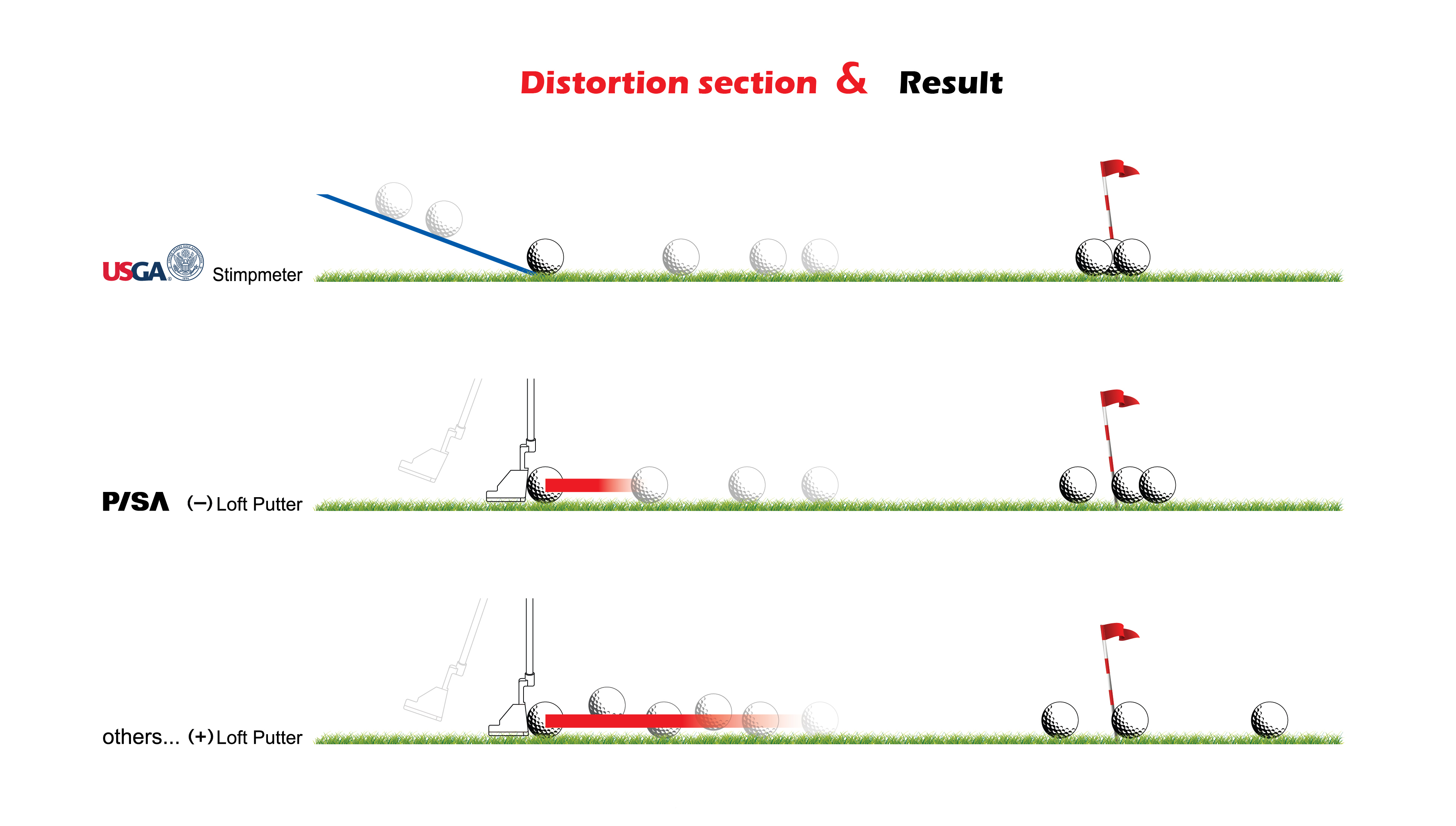
이메일주소 무단수집을 거부합니다.
본 웹사이트에 게시된 이메일 주소가 전자우편 수집 프로그램이나 그 밖의 기술적 장치를 이용하여 무단으로 수집되는 것을 거부하며, 이를 위반시 정보통신망법에 의해 형사 처벌됨을 유념하시기 바랍니다.